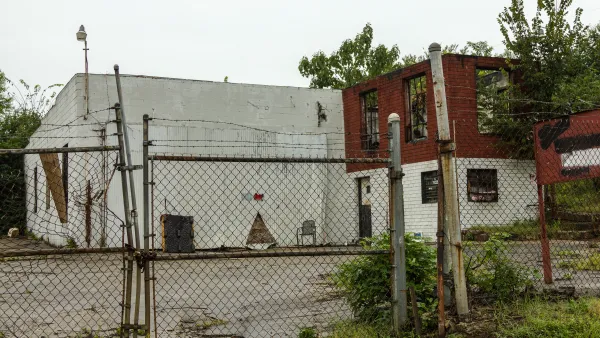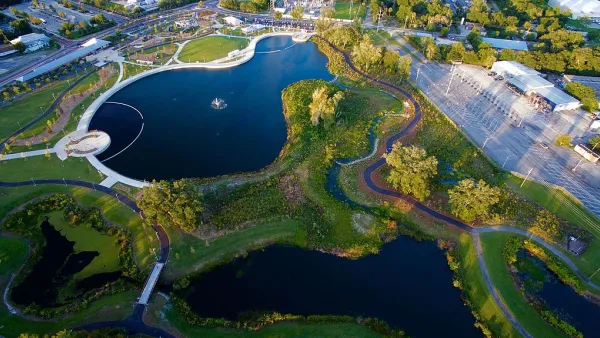Ronda Kaysen reports on the growing trend in transforming brownfield sites in disadvantaged communities into health centers, "in essence taking a potential source of health problems for a community and turning it into a place for health care."
In recent years, communities in Florida, Colorado, New Hampshire, Minnesota, Oregon and California have seen contaminated properties transformed into desperately needed healthcare facilities, with government tax credits and grants providing the "vital seed money" to make projects feasibile, writes Kaysen. In fact, the practice has become so widespread in Florida that an ad hoc movement led by local government officials, environmental advocates and health center developers, "have toyed with various names for the concept, like Doc in a Box, healthfields and Highway to Healthcare."
As Kaysen notes, "many of the country’s 450,000 contaminated sites, known as brownfields...are disproportionately concentrated in poor communities because contaminated sites are more difficult to redevelop if property values are depressed. Banks are often reluctant to finance construction on a property that might require a costly cleanup."
“It’s a Catch-22,” said Phyllis B. Cater, chief executive of Spectrum Health Services. “The environmental issues are significant and yet there are scarce resources for communities to do the cleanup and remediation that’s required.”
"But if the state or federal government provides the first piece of financing," says Kaysen, "other funders are more likely to fall into step."
And in places like Manchester, N.H., where a 240,000-square-foot ambulatory care facility has replaced a former Tyson meatpacking plant, such facilities can serve as the first phase of a larger redevelopment plan. “When you look at revitalizing a community, these kinds of uses tend to be the first anchors,” said Mathy Stanislaus, an assistant administrator for the Environmental Protection Agency.
FULL STORY: Health Centers Find Opportunity in Brownfields

National Parks Layoffs Will Cause Communities to Lose Billions
Thousands of essential park workers were laid off this week, just before the busy spring break season.

Retro-silient?: America’s First “Eco-burb,” The Woodlands Turns 50
A master-planned community north of Houston offers lessons on green infrastructure and resilient design, but falls short of its founder’s lofty affordability and walkability goals.

Delivering for America Plan Will Downgrade Mail Service in at Least 49.5 Percent of Zip Codes
Republican and Democrat lawmakers criticize the plan for its disproportionate negative impact on rural communities.

Test News Post 1
This is a summary

Test News Headline 46
Test for the image on the front page.

Balancing Bombs and Butterflies: How the National Guard Protects a Rare Species
The National Guard at Fort Indiantown Gap uses GIS technology and land management strategies to balance military training with conservation efforts, ensuring the survival of the rare eastern regal fritillary butterfly.
Urban Design for Planners 1: Software Tools
This six-course series explores essential urban design concepts using open source software and equips planners with the tools they need to participate fully in the urban design process.
Planning for Universal Design
Learn the tools for implementing Universal Design in planning regulations.
EMC Planning Group, Inc.
Planetizen
Planetizen
Mpact (formerly Rail~Volution)
Great Falls Development Authority, Inc.
HUDs Office of Policy Development and Research
NYU Wagner Graduate School of Public Service





























